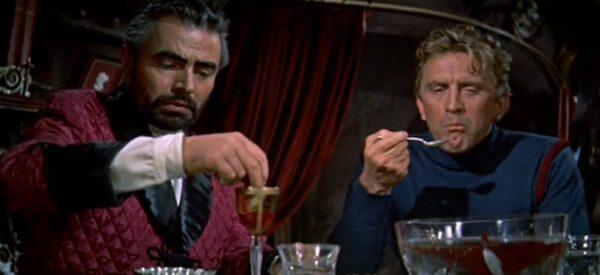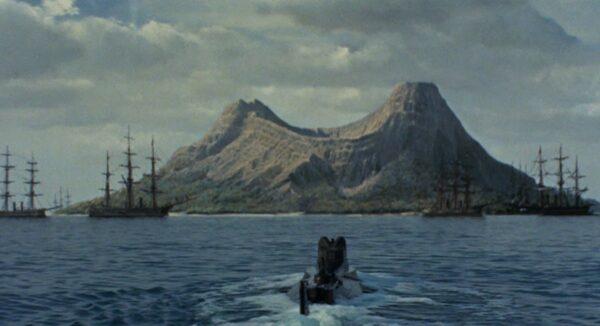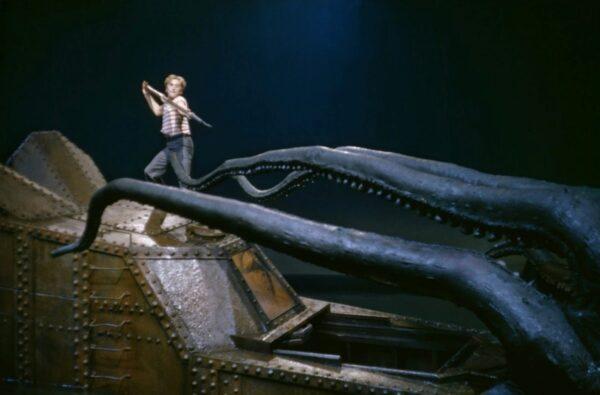I consider producer and director Steven Spielberg’s Indiana Jones films to be among the last of the great adventure franchises. We’re talking about the original trio of films from the 1980s, not the mediocre “Indiana Jones and the Kingdom of the Crystal Skull” that was produced in 2008 (and inarguably the weakest link in the entire series). The series had just the right mixture of peppy pacing, high tension, exotic locales, and lovable B-movie corniness. In other words, it provided plenty of spills and thrills without taking itself too seriously.
These days, we’re subjected to adventure fare that is supposedly targeted at families but often misses the mark. Not only are they oversaturated with gratuitous amounts of CGI (to compensate for overly derivative or uninteresting storylines), but they also typically feature too much unnecessary violence. Indeed, in today’s cynical times, adventure films from the days of yore are considered passé by many modern audiences. Oddly, good, wholesome entertainment is frowned upon.

Therefore, I’ve taken it upon myself to review a slew of adventure films from an earlier time when rousing drama and, yes, actual “adventure” took precedence over garish special effects and wanton bloodshed—starting with director Richard Fleischer’s 1954 extravaganza, “20,000 Leagues Under the Sea.” It’s based on an 1869 French nautical adventure novel of the same name by author and playwright Jules Verne.
This grand tale begins on the docks of San Francisco in 1868. A state of fear inundates the city’s ports because many seagoing vessels are disappearing in the South Seas—an important shipping region. Rumors that there is some sort of sea monster on the loose and the cause of the vanishing ships only feed the rising hysteria.
Prominent intellectual and marine biologist Professor Pierre Aronnax (Paul Lukas) is passing through the city with his apprentice, Conseil (Peter Lorre). They’d intended to travel to Saigon for scientific research purposes, but the voyage was canceled because its fearful crew deserted the vessel.

But before Aronnax and Conseil can pack up and leave for Paris, a representative of the United States government offers them a trip through the southern seas to search for the notorious sea monster. This piques the professor’s interest. The ship they’ll travel aboard will eventually reach Saigon as well, so Aronnax accepts.
After months of fruitless searching, Captain Farragut (Ted de Corsia) calls off the voyage. He’ll take Aronnax and Conseil to Saigon but that’s about it. However, as the crew sets their new course, they encounter the so-called sea monster, which cripples their ship. Aronnax and Conseil, along with the bawdy, wisecracking harpooner Ned Land (Kirk Douglas), manage to escape the sinking vessel but are stranded at sea.
The trio encounters the “monster” again, only to discover that it isn’t one of flesh and blood but, rather, metal. It’s an advanced submarine captained by the malevolent Nemo (James Mason). Nemo and his men have created what they consider a utopian existence based at a secluded, hydro-powered island called Vulcania. Nemo’s various technological innovations prove to be brilliant and could be potentially useful to the outside world. But will he contribute, having already turned his back on civilization?

One of the things that I found fascinating about this film was how the characters had different, often competing, philosophical outlooks. For instance, Professor Aronnax believes that Nemo’s genius could be used for the betterment of mankind and attempts to convince the latter to share his inventions with the larger world. But Land is a more practical, straightforward individual who considers Nemo to be an evil mastermind who preys on innocent seagoing vessels merely to exact his revenge on civilization as a whole. (Nemo’s family was killed while imprisoned in a slave colony.)
Surprisingly, the acting isn’t over the top, as is typical of these types of films. Each character is portrayed logically by the more than capable ensemble of actors, even if the character being portrayed is irrational or impulsive. Especially James Mason—his subtle performance exudes a calculating malevolence indicative of many of his later roles.
Perhaps best of all, “20,000 Leagues Under the Sea” is truly a family-friendly movie that folks can watch together without having to worry about seeing people being dismembered, tortured, or any other unnecessary nonsense.





